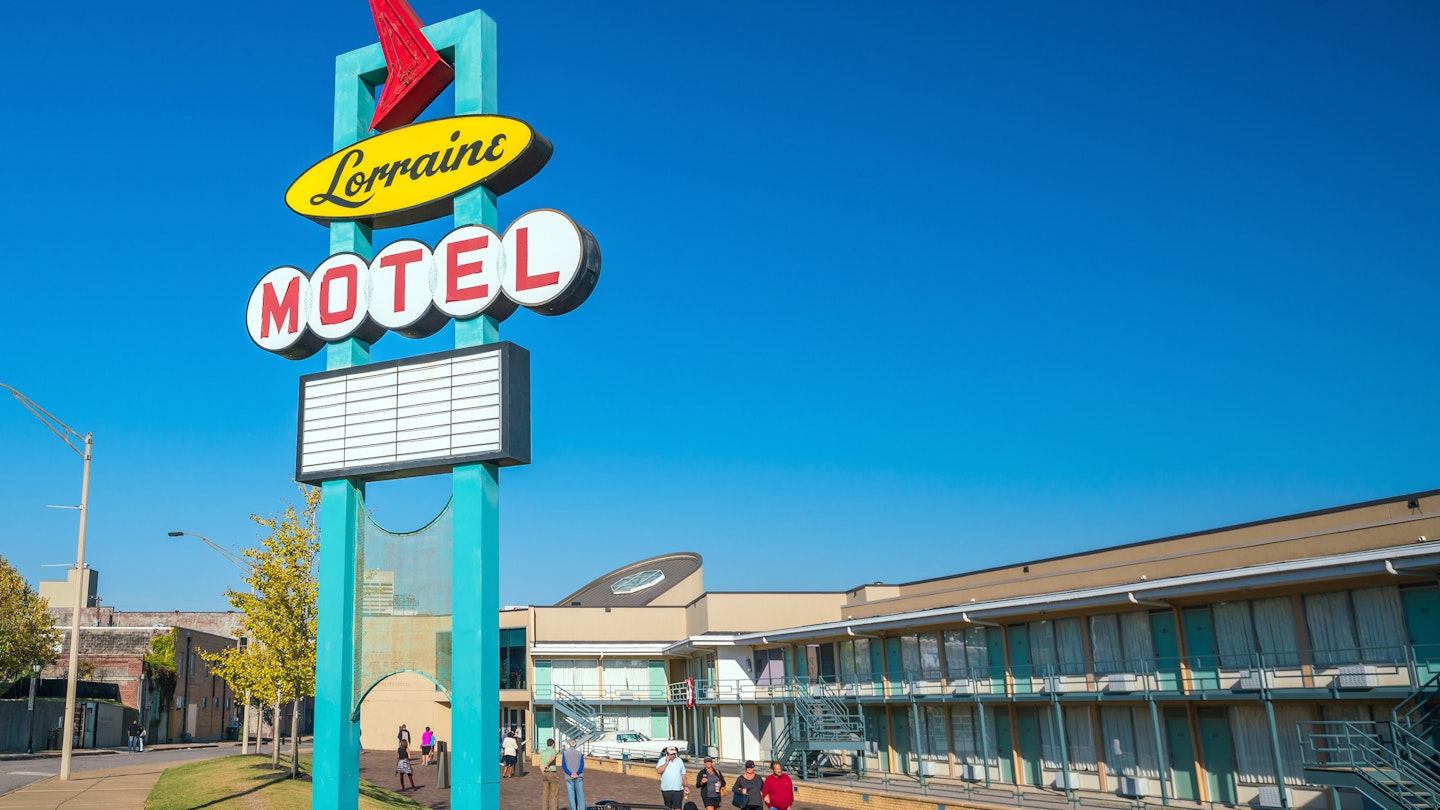National Civil Rights Museum at the Lorraine Motel
Arguably one of the most important museums in the US highlighting the struggle for Civil Rights, the National Civil Rights Museum at the Lorraine Motel is both an educational center and a shrine to civil rights leader Dr. Martin Luther King Jr., who was assassinated at this location in 1968.
History of the Lorraine Motel
To understand the importance of the National Civil Rights Museum located in the heart of the South Main Historic Arts District of downtown Memphis, you first need to understand the Lorraine Motel, where the museum is partially located.
Built in 1925, the Windsor Hotel (as it was known then) was a whites-only establishment. Though the hotel became the Marquette in the 1940s, the racial policy remained.
Things changed in 1945 when Walter Bailey, a Black Memphis businessman, purchased the establishment and renamed it the Lorraine Motel after his wife, Loree, and a well-known tune called “Sweet Lorraine.”
The Lorraine was one of a few hotels that served Black travelers.
Singers like Aretha Franklin, Otis Redding, and The Staple Singers were among the motel’s most popular guests, largely due to its proximity to a trio of famous recording studios – Stax Records, Royal Studios, and Sun Studio – all less than three miles away.

On April 4, 1968, the motel became the site of one of the darkest days in American history when Dr. Martin Luther King Jr. was assassinated on its balcony.
King was in Memphis to support a sanitation workers strike and gave his famous “I’ve Been to the Mountaintop” speech at Mason Temple the day before his death, not far from the motel.
The room where King stayed – 306 – was never rented out again and has been preserved, exactly as it was on that day.
By the 1980s, the Lorraine Motel was in foreclosure when D’Army Bailey, who was an activist, lawyer, and judge, raised over $140,000 to purchase the motel. Bailey’s vision was to make the motel more than a place to learn history. He hoped it would inspire people to take action.
The National Civil Rights Museum opened in 1991 and underwent a $27.5 million renovation in 2012. Today, it serves as the heartbeat and anchor of downtown Memphis. Its presence directly benefits the neighborhood and has sparked the area’s revitalization, with new hotels, restaurants, and apartments.

Birth of the National Civil Rights Museum
Over the last 30 years, the National Civil Rights Museum has become a place of unity and community for Black Memphians and those who support ongoing civil and human rights issues worldwide. It’s been the ideal site and meeting location for various protests like Black Lives Matter, pro-immigration rallies, and other peaceful gatherings.
Every year on April 4 and January 15, King’s birthday, the museum honors his life and legacy through a series of events with prominent civil rights leaders and scholars. Local artists give powerful musical performances directly in front of the balcony where King was assassinated.

For the April 4 event, at 6:01 pm – the time King was shot – there’s a moment of silence for the ceremonial changing of the wreath on the balcony at Room 306.
The museum has hosted the annual Freedom Awards since 1991, honoring individuals who’ve had a significant impact on the battle for human rights.

Visiting the National Civil Rights Museum
Over 12 million people a year visit Memphis for its legacy of blues, soul and rock ’n’ roll, heading to iconic sites like Beale Street and Elvis Presley’s Graceland.
However, it’s the history beyond the music that attracts several hundred thousand tourists to the National Civil Rights Museum at the Lorraine Motel every year, contributing to the over $3 billion that the Memphis tourism industry earns annually.
The facade of the Lorraine with its mint green doors typically evokes heavy emotions for most visitors.
The disturbing image of King’s assassination makes for a sorrowful and humbling first-time visit.

Upon entering the museum, visitors are met with a 7000-pound bronze sculpture depicting women, men, and children physically linked to one another. This large artwork symbolizes the struggles of past generations.
Highlights of the Museum
The museum tour begins with the “Culture of Resistance” exhibit, showcasing the global impact of slavery. Visitors then head to the theater for a short video about the history and experiences of Black Americans in the US, setting the tone for the rest of the tour.
There are hundreds of historical artifacts and interactive exhibits covering everything from slavery to the Civil War, and Jim Crow to present-day civil rights issues.
A minimum of two hours is recommended for a self-guided tour to fully appreciate the wealth of knowledge offered at the museum. Ensure you leave enough time to visit the legacy building, which explains the investigation and conspiracy theories surrounding Dr. King’s assassination.
The National Civil Rights Museum remains a vital link between the civil rights struggles of the past and the continuing fight for equality worldwide.





